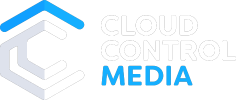What If TikTok Goes Away?
The Rise of Short-Form Video
With the average attention span dropping from two and a half minutes to 45 seconds in the last decade, it’s no wonder short form videos have exploded in popularity. Led by the rise of Tiktok, Facebook reels, Instagram reels, and YouTube Shorts have followed suit. TikTok has more than 150 million active monthly users in the U.S. and YouTube shorts get more than 50 billion views a day. The rapid growth of these channels offers opportunity and promise for digital marketers. But they also require special attention and cannot. You can just roll out identical ads across the platforms. Each channel has its own specifications. Understanding how to work within each is critical to success.
TikTok Successes in Digital Marketing
Many companies have focused their short form video efforts on TikTok recently because of its sophistication and its advertising opportunities. Its audience is massive and properly designed creative yields solid results in TikTok. At CloudControlMedia, we have seen the cost per lead drop by up to 10x when using specially designed creative for TikTok and keeping creative fresh. TikTok creative can fatigue in as little as month, but when that happens there are some strategies you can use to give campaigns new life.
TikTok In Trouble?
But with all its success metrics, some wonder how long they can stay on the platform. The United States passed legislation forcing the Chinese-owned company to sell TikTok or face a total ban of the platform. Since President Biden passed the law, there remains uncertainty about the future of TikTok. And while the ban had some support at its outset, only 32 percent support it now. And half of Americans think it’s unlikely that TikTok will actually be banned in the U.S.
Should TikTok be banned all hope is not lost as the other platforms listed above use many of the same assets as TikTok. Companies currently investing in TikTok may be able to tweak those assets and bring them over to Reels or Shorts. But those channels use different targeting so there will be a learning curve to move from TikTok to other platforms.
Choosing a TikTok Alternative for Digital Marketing
Whether TikTok does or doesn’t get banned it is always good to have options. The right audience may be on another platform. Tastes change and companies introduce new features all the time. It could be a new feature that attracts people to another platform or TikTok could run people off with new features like Digg did all those years ago.
On Reels we find that a strong lookalike audience is key as Meta can use those signals to find the most relevant people. If you start building an audience now with the Meta pixel you can capture visits coming from TikTok (or any source) and use that as a base.
For Shorts, ads can be integrated into Performance Max campaigns or Demand Gen campaigns where you can learn which targeting does and does not work. From there you can build dedicated campaigns. If you have YouTube ad campaigns running already then Shorts can also be launched alongside those.
The goal is to use the assets you currently have for TikTok and determine where you might transfer them to other platforms. Even if TikTok is not banned, it would still be a good idea to gain learnings about which platform your audience is using.
How Do Alternative Marketing Platforms Differ from TikTok?
Short form video is a full screen experience with less ad copy. The ad must tell the story, and you cannot rely on headlines and descriptions to fill in the blanks. One mistake we often see is when companies put video or image ads designed for placements on Facebook/Instagram as their reels ads. This results in ads that look out of place and do not match the expectations of the audience.
Vertical content that tells a story is key.
The message you send out in your ads needs to be relevant to your brand and your audience. And you need to make sure to conform to the platform’s requirements. If you try to use content that was designed for other platforms (e.g., horizontal videos or traditional TV ads), it may not fit the vertical aspect ratio used on most short-form video services, resulting in awkward cropping, poor visual quality, or black bars, which will diminish the ad’s appeal and send the wrong message to your audience.
Even if you are not using video assets in your ads for short form video you still need to take many things into account. Is the image sized to fit a phone screen? Does it contain text that tells a story? Does it have a call to action? And will it stand out as it slots in between an endless scroll of videos? A full screen image that uses all the real estate and gets the message across without relying on any other ad copy will have the best impact on the viewer.
It will also be good to test any creative that was not the best performer on TikTok. A new audience can have different tastes, and that creative may end up being more successful on Reels or Shorts. Creative that was not successful at all or that struggled for specific reasons may not work but that ad that just never caught on could find new life.
Short Form Video’s Future in Digital Marketing
Short form video content is here to stay and is projected to continue growing in popularity across all the platforms that support it. Global spend on short form video advertising is expected to grow $11 billion a year through 2028. While TikTok is the hot platform right now, it is important to have a plan to make sure that you have a presence where your audience is. A complete short form video plan can help you find new customers and help drive them down the funnel.
Advertising in short form video is not new, but has long been seen as just a placement on Facebook and Instagram to be checked off. We here at CCM believe that it deserves just as much attention as any other part of a digital marketing strategy.
As platforms holders like Google place more and more emphasis on these kinds of content, the advertisers that were there first will have an edge in a growing space.
Let CCM Help
CloudControlMedia is working diligently to stay ahead of the ever-changing shifts in short form video advertising to ensure we continue to drive the most effective results for our clients. Are you getting all you can from your paid media campaigns? Contact CloudControlMedia today and we’ll let you know.
Larry Harrington, Director of Paid Media Strategy[/vc_column_text][/vc_column][/vc_row]














